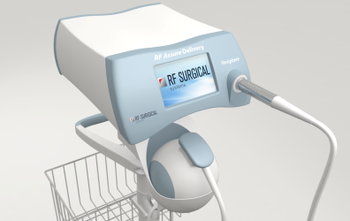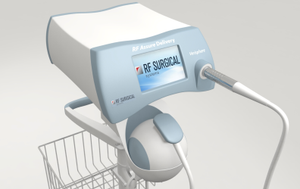
Pregnancy is possible for women with inflammatory bowel disease, but collaboration is needed between gastroenterologists and obstetricians.

Pregnancy is possible for women with inflammatory bowel disease, but collaboration is needed between gastroenterologists and obstetricians.

Of the top 10 surgical procedures that are decreasing at the greatest rate, 4 of them are related to obstetrics and gynecology.

Now that stand-alone HPV tests have been approved, is it worth changing cervical cancer screening recommendations? Juan Felix, MD, weighs in.

Gender-based pay inequality in female-predominant fields, such as nursing, may not be what you think. Find out what new research has uncovered.

Chronic pelvic pain is costly to diagnose and treat, but appropriate and timely interventions can lead to a restoration of quality of life.

These tips for implementing good technique in laparoscopic surgeries can help reduce complications and result in faster surgeries.

A simple device may make blood draws and IV placement easier for fearful patients, or for patients with difficult-to-feel veins.

Two studies revealed that treatments for symptoms of menopause differed based on when physicians trained and perception of patient understanding.

The cybersecurity of medical devices is on the mind of the FDA, which recently issued recommendations for security on wireless medical devices.

A universal standard for monitoring fetal growth can better detect which fetuses are at risk for intrauterine growth restriction.

As a result of concern over widespread phthalate exposure, pregnant women were studied to determine their phthalate level and its effect on reproductive health.

The outbreak of Ebola in West Africa rightly has become a world health crisis. But there are other casualties of the outbreak that we don't hear much about.

There is little research on preserving fertility in transgendered men. Research from Sweden provides some evidence on reproductive counseling in these patients.

More and more OB/GYNs are eliminating obstetric care from their practice. So who will deliver all the babies if not for midwives?

Racial and cultural disparities exist in women's understanding of conception and pregnancy, as well as in the effectiveness of infertility treatments.

Researchers have developed a "biospleen"-a device that could filter unknown pathogens from the blood in patients at risk for sepsis.

A new lifelike birth simulator with all the bells and whistles needed to mimic various L&D scenarios may have just raised the bar for competency trainers.

Improving patient-doctor communication is the goal of genitourinary syndrome of menopause (GSM), the new name for vaginal atrophy and other menopause symptoms.

A new scanning device-the RF Assure Delivery System-may make manual counting and vaginal sweeps for avoiding retained sponges or gauze a thing of the past.

New research may debunk a 20-year practice of prescribing low molecular weight heparin (LMWH) to pregnant patients at risk for blood clots.

A pseudo-tampon that delivers an antiretroviral drug is now being studied as a form of pre-exposure prophylaxis for women at high risk for HIV infection.

Midwifery and obstetrics don’t need to be mutually exclusive disciplines. Here are 6 examples of how midwives and OBs can give complementary care that benefits patients.

A novel birth control option is in the works, and it’s in the form of a microchip that, when implanted, could work for up to 16 years. The future is now, folks.

Published: July 17th 2014 | Updated:

Published: July 24th 2014 | Updated:

Published: August 21st 2014 | Updated:

Published: August 28th 2014 | Updated:

Published: September 25th 2014 | Updated:

Published: August 20th 2014 | Updated: